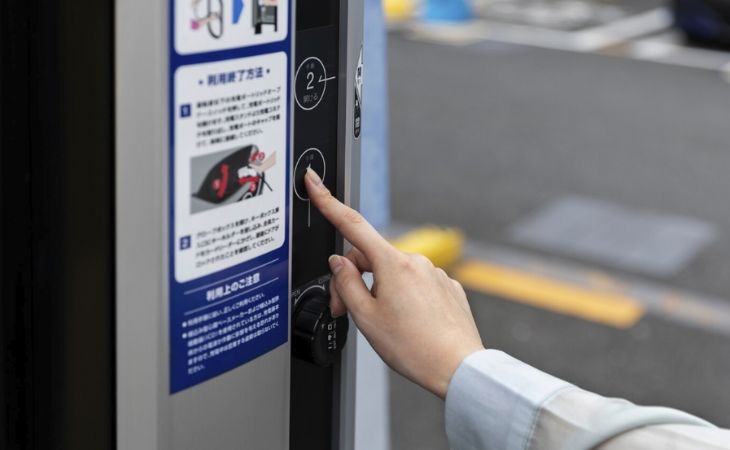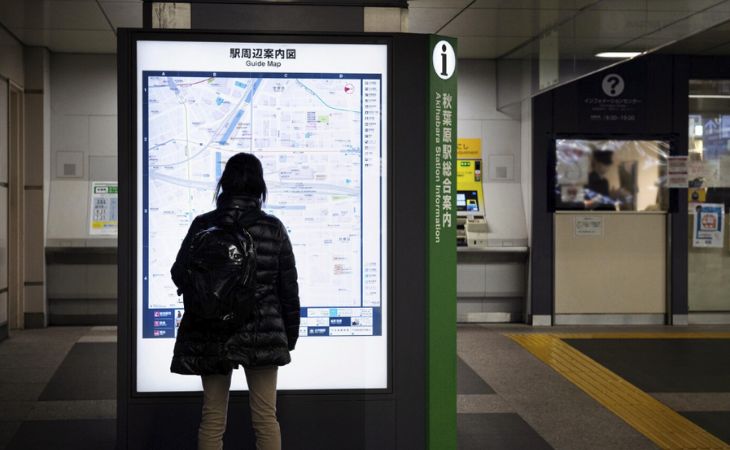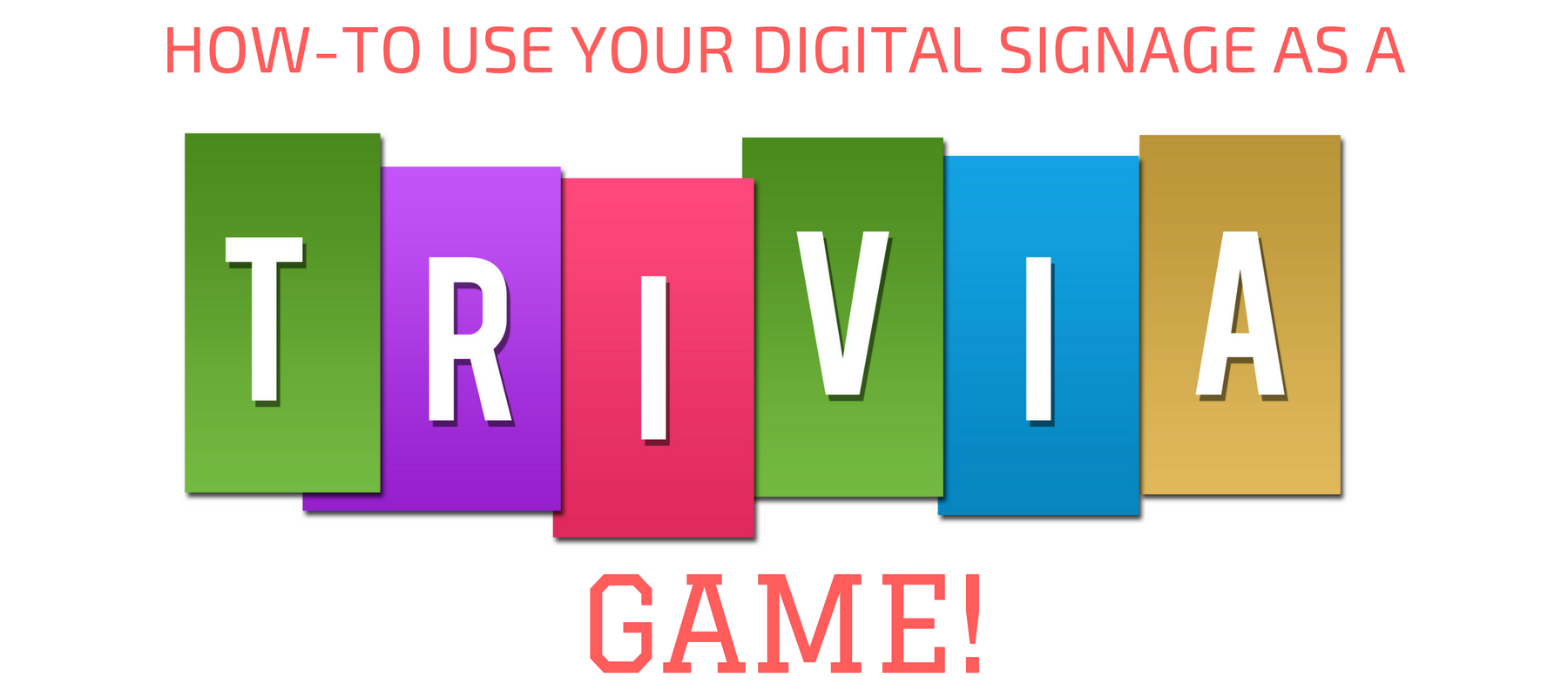
Digital signage is becoming standard in a business’s marketing and communications strategy. We’re seeing striking digital signs with dynamic visuals, interactive content, and compelling messages everywhere.
While businesses are leveraging the power of digital signage to their full extent, many are forgetting one crucial aspect: ADA compliance. Setting accessibility guidelines for equal and fair treatment of persons with disabilities, the ADA requirements ensure your digital signs are inclusive, engaging, and accessible to all.
What is ADA Compliance for Digital Signage?
ADA, or the Americans with Disabilities Act, is a set of guidelines that ensures individuals with disabilities receive equal treatment as individuals without disabilities. This includes equal access to information and functionality.
In the context of digital signage, the ADA requires that digital signs accommodate people with disabilities, from the blind to the hearing impaired. It calls for reasonable accommodation of differently-abled individuals in terms of digital signage design, functionalities, and features, allowing them to engage and interact with a digital sign as a non-disabled individual would.
Why Does ADA Compliance Matter for Digital Signage?

Plenty of businesses overlook ADA compliance in their digital signage. But it’s absolutely crucial to consider it in your digital signage strategy. Not only does it ensure equal opportunities for individuals (with or without disabilities) but it also allows you to tap into a larger audience.
According to the World Health Organization (WHO), 1.3 billion in the world have a significant disability, which accounts for 16% of the global population. That’s a significant portion of your consumer base that you need to accommodate.
Individuals with disabilities should not be discriminated against — and making your digital signage inaccessible to them is a form of discrimination in the eyes of the ADA. This could cost your company thousands of dollars in lawsuits and fines.
Even worse, non-compliance with ADA requirements risks your company’s reputation. Today’s consumers value inclusivity, and a business that cares about it is favorably looked upon.
For digital signage to be effective, it needs to comply with ADA requirements and be accessible and inclusive for all. Doing so will reap legal, communicative, and economic benefits for your business.
ADA Requirements for Digital Signage
Now that you understand the importance of ADA compliance, here are its key requirements that will allow your digital signage to accommodate individuals with disabilities. We lay down the ADA requirements from the physical aspect of your displays all the way to its content and interactive features.
Visual Accessibility
The ADA lays down guidelines for visual considerations in digital signs, including font, text size, text height, and colors, among others.
According to ADA requirements, digital signage text should facilitate maximum readability, with large and clear letters measuring ⅝ to 2 inches in height and a maximum of 12 points in width. The text should also use ADA-approved fonts, including Times New Roman, Cabri, and Helvetica.
As for the background, the color should have a good contrast with the text, ideally with a color ratio of 3:1. Flashing elements and rapidly changing content should also be avoided.
For digital signs that incorporate braille to cater to the visually impaired, they must be Grade 2 and have a minimum clearance of ⅜ inches on all sides.
Auditory Accessibility
To assist individuals with visual impairments, auditory accessibility is also required for digital signage. The ADA requires that visual elements have audio descriptions for those who need them and suggests that digital signage displays be installed with assistive listening technology.
For video content, the ADA advises including transcriptions and closed captions to cater to the hearing impaired. It’s also recommended that the signage come with built-in speakers or a universal headphone jack with volume control.
Interactive Accessibility

The ADA also lays down requirements for touchscreen displays. Specifically, they should be designed to cater to individuals with disabilities and allow them to use the touch screen and gesture-based controls.
This requires the addition of alternate input methods for those who cannot access the touch screen, such as switches, joysticks, or voice commands.
For digital displays that are voice-operated, the integration of voice-responsive technology is necessary.
Design and Content
When it comes to designing content, the key to complying with ADA requirements is readability. Use ADA-approved typefaces and follow the recommended text size for maximum legibility. A minimum contrast of 70% between the background and lettering is also recommended for easy viewing of the content.
Design-wise, it’s good practice to use pictograms and universal icons that people recognize and understand. Compared to text, these take up less visual real estate and make the content more accessible to those with visual disabilities.
Ultimately, digital signage content should be made with persons with disabilities in mind. Think about how the content can be the most accessible to differently-abled individuals.
And remember, disabilities aren’t limited to physical impairments. You should also be inclusive of persons with autism, cognitive and learning disabilities, hearing impairments, psychological disorders, and sensory disabilities, among others.
Screen Placement

Digital signage placement follows the rule of maximum visibility. But to cater to persons with disabilities, it isn’t good practice to place it so high up the wall that individuals in wheelchairs cannot view and interact with the screen.
The ADA recommends a height placement that accommodates persons in wheelchairs while ensuring that the display does not obstruct pathways for persons with disabilities.
Digital signage enclosures should be positioned 27 to 80 inches from the floor, measuring from the highest point of the flooring material. Ground space around the screen should measure 30 by 48 inches.
If the screen is wall-mounted, it can only stick out from the wall a maximum of 4 inches. This necessitates the use of thin wall mounts or recessing the screen to meet the requirement. These guidelines also apply to video walls.
Interactive digital signs with touchscreens should be a maximum of 49 inches from the floor with a reach of 10 inches max. For wheelchair access, kiosks with a 15 to 20-degree upward slope are recommended.
Physical Considerations
It’s not just digital signage content that needs to be ADA-compliant. There are provisions on the physical aspect of the screens as well. Specifically, screens should have a non-glare finish for maximum readability in different lighting conditions.
Display System Navigation

Interactive digital signage that allows the user to tap elements in the display to pave their own customer journeys should also be accommodating to individuals with disabilities. The display system menus should be intuitive and accessible, providing clear instructions for use and navigation.
Furthermore, companies should ensure design consistency across their digital signage network to eliminate confusion and aid in seamless use.
Other requirements are the inclusion of zoom capability, tactile/ haptic responses, and audio tones to signal responses to actions and changes.
What if You Don’t Comply with ADA Digital Signage Requirements?
ADA compliance isn’t something you can disregard. In fact, in 2023, there were a total of 4,605 ADA digital accessibility lawsuits, a 14.1% increase from the previous year. Non-compliance can expose your company to hefty fines, penalties, and legal fees — not to mention scrutiny from your consumers.
The total cost of an ADA digital accessibility lawsuit is $200 million, an amount enough to startle your budget and hinder your operations. As consumers become more aware of ADA guidelines and motivated to fight for inclusivity, it’s expected that more and more lawsuits will be filed against businesses that don’t comply with ADA requirements.
Implement ADA-compliant Digital Signage
ADA compliance is mandatory for your digital signage strategy. Sure, the biggest motivation to comply with ADA requirements is to avoid fines and lawsuits. But more importantly, adopting ADA guidelines into your digital signage strategy allows you to accommodate persons with disabilities and provide them with equal access to information on your screens.
ADA compliance is something that modern consumers look for in a business. With a strong digital signage strategy that is accessible and inclusive of all, you can increase your reach, generate trust, and ultimately, boost your business’s social impact and bottom line.
Don’t leave out a significant market segment of customers by keeping them from accessing and engaging with your digital signs. ADA compliance can reap significant benefits not only for the differently abled but your business and society as a whole.
Make your digital signage network ADA-compliant with powerful software. Rise Vision’s digital signage solution allows you to customize your displays to meet ADA requirements and add features to improve accessibility. Sign up for a free digital signage trial to learn more.





